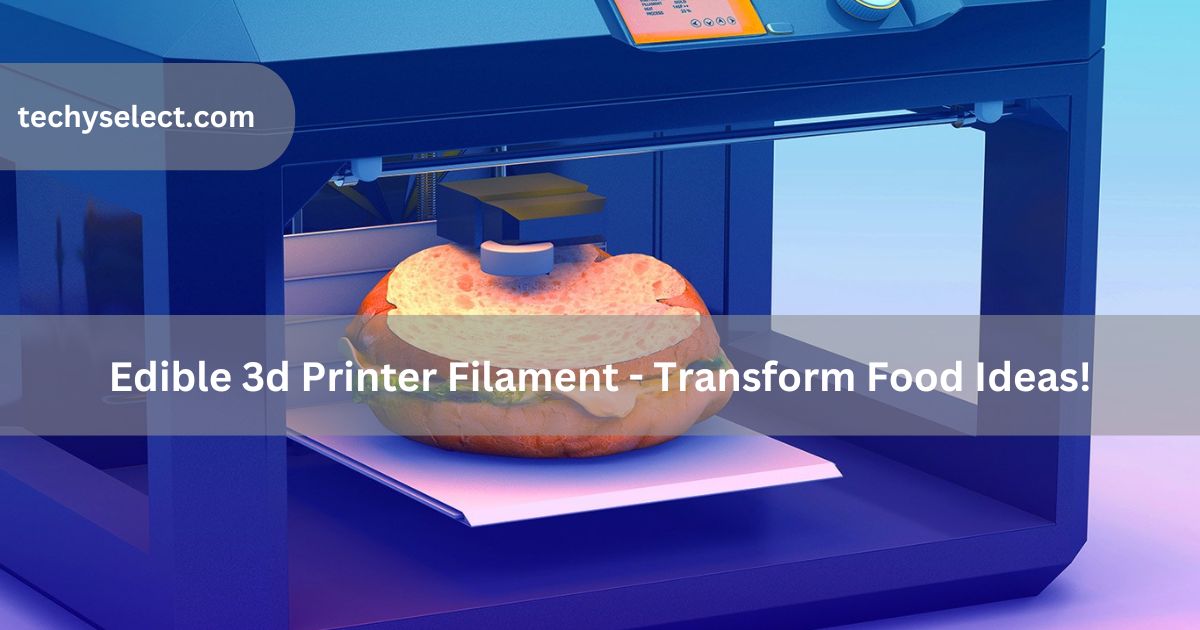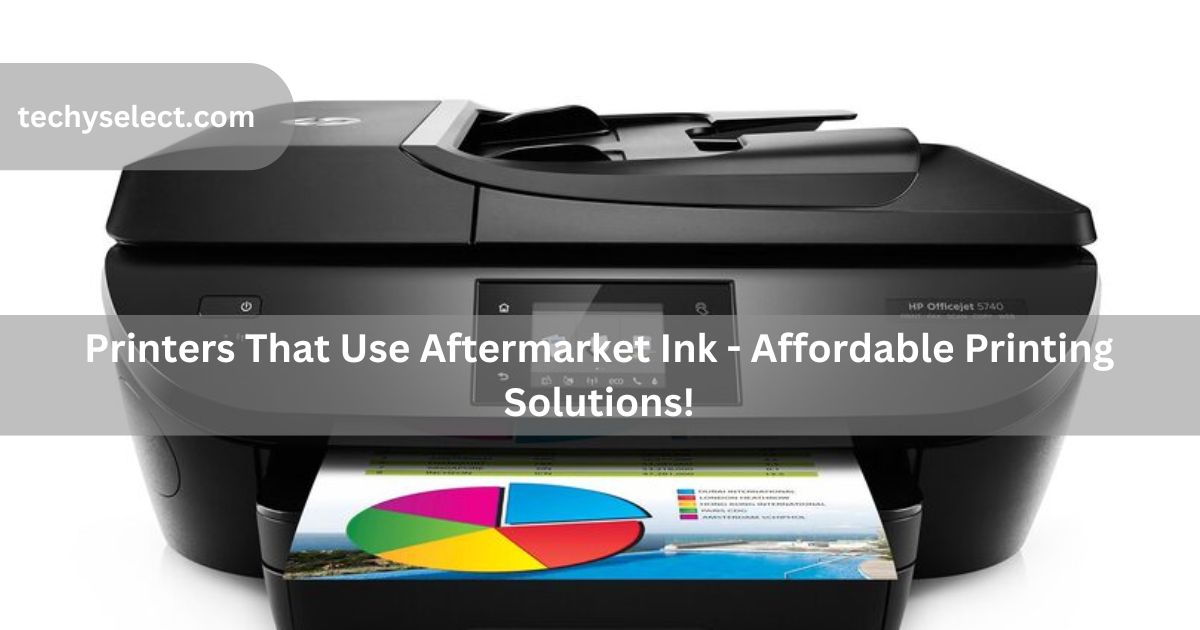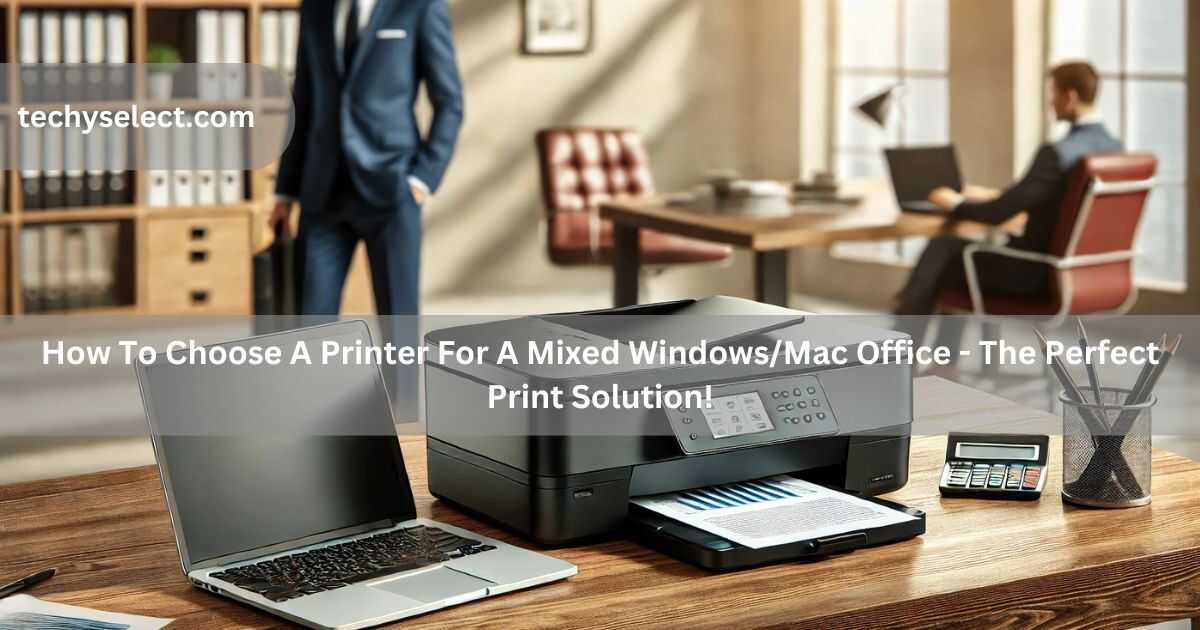Edible 3D printer filament is amazing! It lets me create tasty shapes like chocolate, candy, or jelly using a printer. It’s fun to mix food and creativity, making personalized snacks, unique decorations, or even cool gifts. So exciting!
edible 3d printer filament ( short answer )
Edible 3D printer filament is used to print food designs like chocolate, candy, or jelly. It’s a fun way to make creative snacks, decorations, or gifts. Easy to use, it turns food into exciting shapes.
In this article we will discuss edible 3d printer filament.
What is Edible 3D Printer Filament?
Edible 3D Printer Filament is a special material used to create food designs with a 3D printer. Made from ingredients like chocolate, sugar, or gelatin, it allows you to print shapes that you can eat. You can use it to make unique decorations for cakes, cookies, or other desserts, or even create fun, personalized snacks. It’s a creative way to combine food and technology, perfect for parties, gifts, or just having fun in the kitchen. Anyone can enjoy experimenting with edible 3D printing.
Types of Edible 3D Printer Filament – Create Snack Designs!
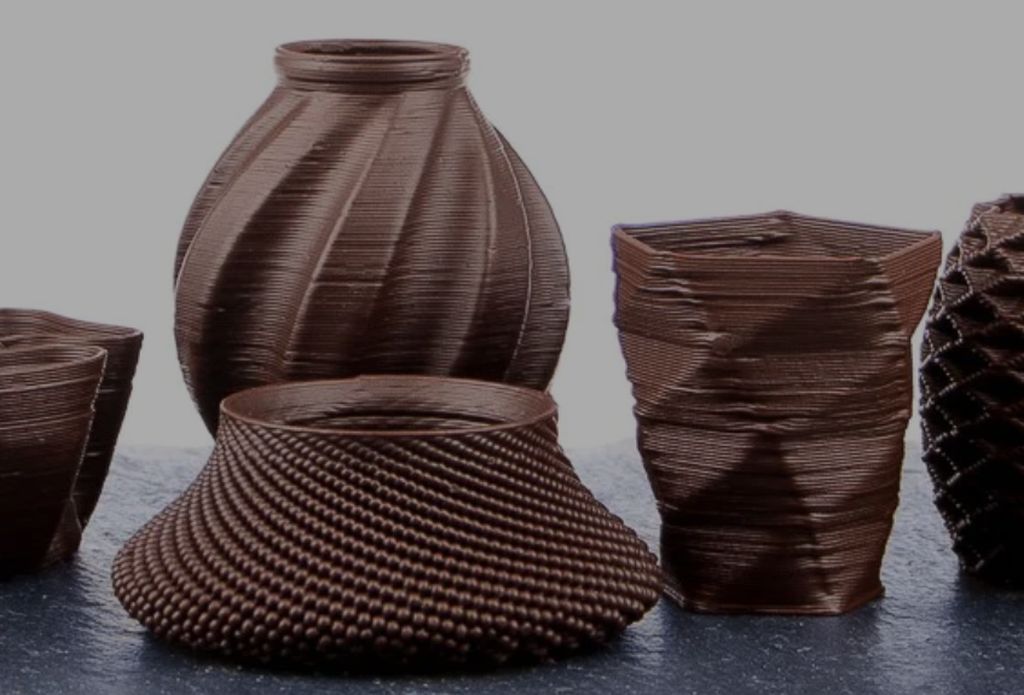
1. Sugar-Based Filaments:
- Composition: Made primarily from sugar and other sweeteners.
- Properties: These filaments can produce sweet decorations and intricate designs suitable for cakes and pastries. They are often used in conjunction with printers designed for food applications.
- Considerations: Sugar-based filaments may require specific temperature controls to prevent melting during printing.
2. Chocolate Filaments:
- Composition: Formulated from cocoa solids, cocoa butter, and sweeteners.
- Properties: Chocolate filaments allow users to create edible chocolate sculptures and designs. They can be printed at slightly elevated temperatures to maintain their shape.
- Considerations: Proper cooling is essential to maintain the integrity of the printed chocolate.
3. Vegetable-Based Filaments:
- Composition: Made from pureed vegetables or plant-based materials.
- Properties: These filaments can be used to create healthy snacks or garnishes. They often come in various flavors and colors based on the vegetable used.
- Considerations: Vegetable-based filaments may have a shorter shelf life compared to sugar or chocolate options.
4. Gelatin-Based Filaments:
- Composition: Derived from gelatin or agar-agar.
- Properties: Ideal for creating gelatinous shapes and desserts, these filaments can produce whimsical designs that are both visually appealing and tasty.
- Considerations: Gelatin-based prints may need to be refrigerated to maintain their structure.
Applications of Edible 3D Printer Filament – Shape Edible Fun!
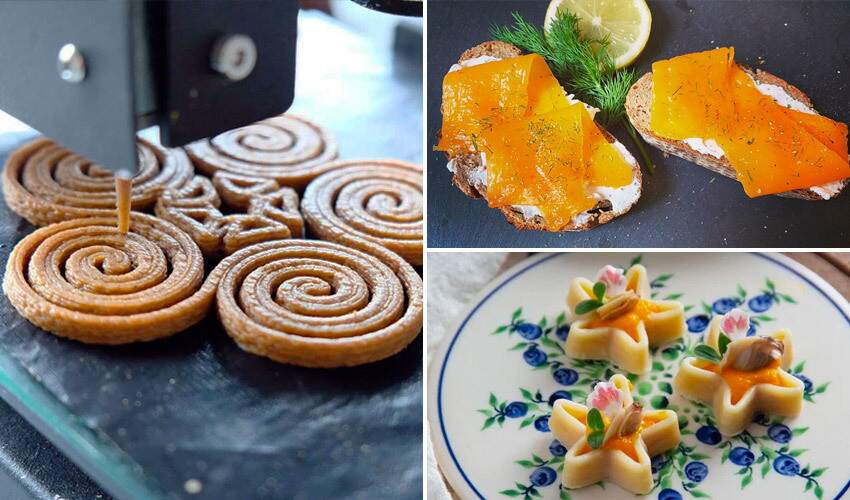
Edible 3D printer filament opens up endless possibilities for creating unique and personalized food items:
- Cake Decorations: Print intricate designs like flowers or patterns for cakes and cupcakes. These decorations can be fully edible and customized for any occasion.
- Chocolate Shapes: Create unique and personalized chocolate pieces for desserts or gifts. It’s perfect for special events like weddings or birthdays.
- Candy Molds: Design creative candy shapes, from fun characters to elegant patterns. These molds can add a personal touch to homemade treats.
- Cookie Cutters: Print custom cookie cutters in any shape or size you need. Great for holidays, themed parties, or unique designs.
- Party Treats: Make personalized edible decorations or snacks for events. Impress guests with creative, edible designs made just for them.
- Educational Models: Craft edible models for teaching topics like science or history. Kids and adults alike enjoy learning with fun, edible designs.
- Custom Gifts: Design edible items like names, logos, or messages. They make thoughtful and creative gifts for any celebration.
Benefits of Edible 3D Printer Filament – Craft Unique Shapes!
Here are some benefits of using edible filament:
- Personalization: Easily create customized shapes, patterns, or messages.
- Precision: Achieve intricate designs that are difficult to make by hand.
- Fun and Creative: Combine food and art to make dining or gifting exciting.
- Versatility: Suitable for desserts, snacks, decorations, and more.
- Innovation: Explore the latest technology in food preparation and design.
What Does Food Safe Really Mean?
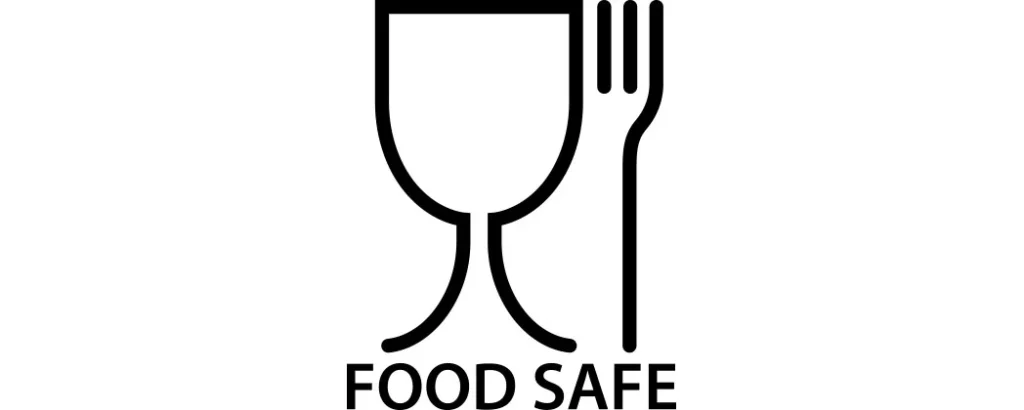
“Food safe” means a product or material is safe to use with food without causing harm. It won’t release harmful chemicals or bacteria when it touches food. For example, food-safe containers, tools, or coatings are tested to make sure they don’t affect the food’s safety or taste. This is important for 3D printing when making edible items. Using food-safe materials ensures that the printed designs are clean, healthy, and safe to eat for everyone.
Some key Points for “Food Safe”:
- Non-Toxic: No harmful chemicals that can contaminate food.
- Approved for Food Use: Meets safety standards for food contact.
- Prevents Contamination: Does not introduce bacteria or pollutants into food.
- Safe for Eating: Materials are safe for consumption, like edible 3D printer filaments.
- Tested and Certified: Materials are rigorously tested to ensure they don’t harm health.
General Food Safe 3D Printing Considerations – Create Edible Art!
1. Material Selection
Use food-safe 3D printing materials like chocolate, sugar, or gelatin-based filaments. These materials are safe to eat and designed for creating edible prints. Always check for food safety certifications to ensure the materials meet health standards.
2. Hygiene and Cleaning
Keep your 3D printer clean to prevent contamination. Wash all removable parts with food-safe cleaning agents and sanitize nozzles before use. Regular cleaning ensures the printed food is safe and free from bacteria.
3. Printer Settings
Adjust your printer to the correct temperature and speed for edible filaments. Different materials like chocolate or sugar require specific settings to print smoothly. Following the manufacturer’s guidelines ensures high-quality, safe prints.
4. Nozzle and Print Bed
Use a dedicated food-safe nozzle and print bed to avoid cross-contamination from non-food materials. Metal nozzles are often preferred for food-grade printing. Clean or replace parts regularly to maintain food safety and print quality.
5. Post-Printing Care
After printing, handle the edible designs with clean hands or tools. Store them in food-safe containers to keep them fresh. Avoid exposing the printed items to moisture or dust, ensuring they are safe to eat.
Read Also: How Long Can A 3d Printer Run – Run Prints Safely!
Food Safe 3D Printing With Stereolithography (SLA) – Print Food Tools!
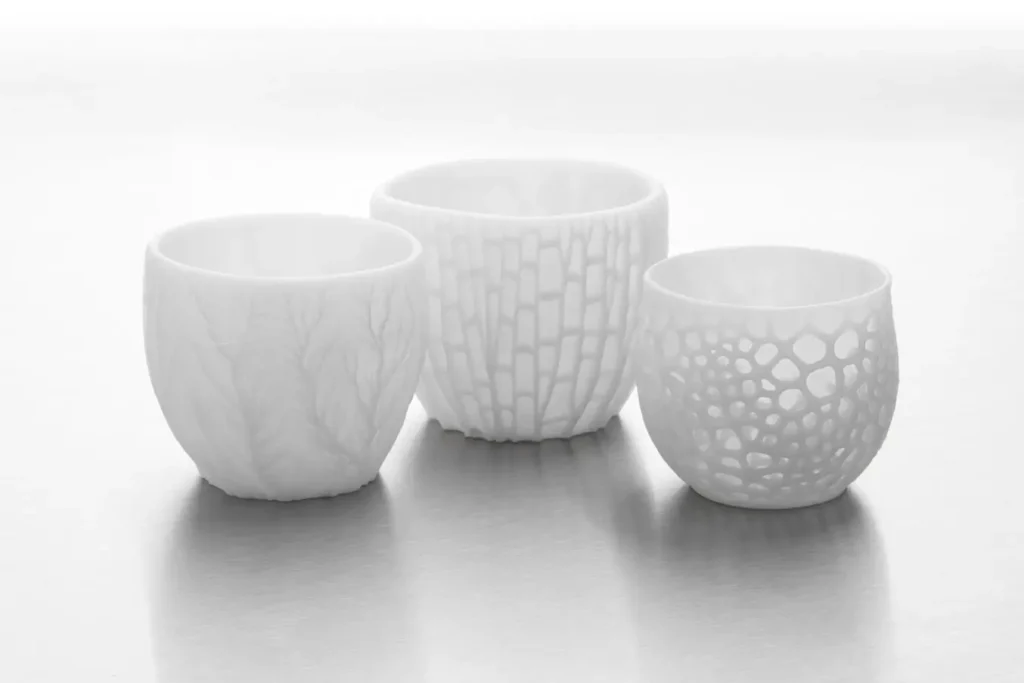
Food-safe 3D printing with Stereolithography (SLA) creates smooth, detailed designs, perfect for food-related items like molds or tools. To ensure safety, use food-safe resins approved for SLA printing. After printing, the item must be properly cleaned and cured to remove any leftover resin.
Hygiene is very important, so clean the printer and tools regularly to avoid contamination. SLA is great for making chocolate molds, cake decorations, or custom utensils, combining precision and creativity while keeping food safety in mind.
Food Safe 3D Printing With Fused Deposition Modeling (FDM) – Make Food Creations!
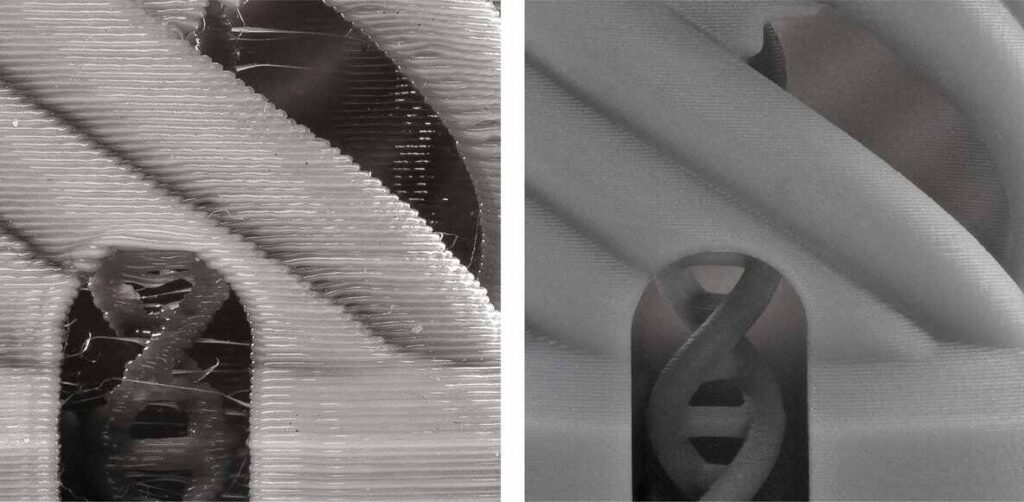
Food-safe 3D printing with Fused Deposition Modeling (FDM) is a great way to create custom food-related items. It uses food-safe filaments like PLA or PETG approved for contact with food. To ensure safety, use a dedicated nozzle and print bed to avoid contamination from non-food materials.
Clean the printer thoroughly before and after each use. FDM is perfect for printing cookie cutters, food molds, or unique kitchen tools. With proper care and materials, it’s a safe and creative way to explore 3D printing!
Food Safe 3D Printing With Selective Laser Sintering (SLS) – Try Safe Filaments!
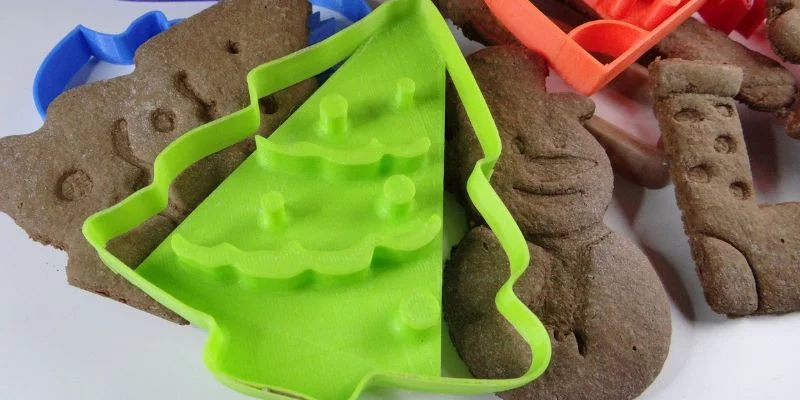
Food-safe 3D printing with Selective Laser Sintering (SLS) uses powdered materials to create strong, detailed items for food use. To ensure safety, use food-safe powders, such as specific nylon materials approved for food contact.
Proper cleaning of the printer and post-processing are crucial to remove any leftover powder and avoid contamination. SLS is great for making durable food molds, tools, or custom designs. With the right materials and hygiene practices, it’s a reliable method for food-safe 3D printing projects.
What is the future of edible 3D printing?
The future of edible 3D printing is exciting and innovative. It could transform the food industry by offering personalized meals, custom desserts, and health-focused nutrition solutions. With eco-friendly materials, it may reduce food waste and create sustainable dishes.
This technology also holds potential for space exploration, allowing compact, on-demand food printing for astronauts. Edible 3D printing is paving the way for creative, sustainable, and personalized food solutions worldwide.
Read Also: Dishwasher Safe 3d Printer Filament – Print Durable 2024!
Frequently Asked Questions
1. Can I print food for parties and events?
Absolutely! Edible 3D printing is perfect for creating personalized treats and decorations for parties and events. From custom cakes to unique snacks, it adds a special touch to any celebration.
2. Is edible 3D printing suitable for beginners?
Edible 3D printing can be a fun hobby for beginners, but it requires patience and practice. Starting with simple projects like chocolate molds can help ease you into the process. It’s important to learn the correct printer settings for each filament.
3. Is PLA food safe FDA approved?
PLA filament is made from food-safe ingredients like cornstarch or sugarcane, and it is generally safe for use in food-related applications. However, PLA itself is not FDA-approved as food contact material. Always check with the filament manufacturer for proper certification and safety guidelines.
4. Are edible 3D printer filaments expensive?
Yes, edible 3D printer filaments tend to be more expensive than regular filaments due to their food-safe qualities and production methods. However, for unique, customized designs, the cost is often worth it for personal projects or small-scale creations.
5. Can I use edible 3D printer filament for mass production?
Yes, While edible 3D printing is great for creating custom, small batches of food, it’s not yet suitable for mass production. The process is slower compared to traditional methods, making it ideal for personalized items or unique designs rather than large-scale manufacturing.
6. How do I clean a 3D printer for food printing?
Cleaning a 3D printer for food printing involves removing any old filament, thoroughly washing the nozzle, and sanitizing the bed and any removable parts. It’s crucial to prevent contamination by ensuring the printer is free from non-food materials.
7. What 3D printer filament is food safe?
Food-safe 3D printer filaments include PLA, PETG, and some special food-grade resins. These materials are made from food-safe ingredients and are often used to create edible designs. However, always ensure the filament is certified as safe for food contact by the manufacturer.
8. Do I need a special printer for edible 3D printing?
Yes, you need a 3D printer compatible with food-safe filaments. Some standard 3D printers can be used with modifications, such as temperature control for food-safe filaments. Ensure the printer’s nozzle and bed are clean and safe for food use.
9. Is PETG filament safe for food?
PETG filament is generally considered safe for food contact, as it is non-toxic and durable. However, it is essential to verify if the specific brand of PETG used is certified food-safe. Proper cleaning and post-processing are also necessary to ensure safety.
10. Can I print with multiple colors?
Yes, you can print with multiple colors using different filaments. You would need to switch filaments during the printing process or use multi-extruder 3D printers for continuous color changes. This allows for creative, colorful designs in your edible creations.
Conclusion
Edible 3D printer filament opens up endless possibilities for creativity in the kitchen, allowing you to design personalized and unique food items. From cake decorations to custom chocolates, this technology brings art and food together. With proper care and the right materials, edible 3D printing can transform the way we create and enjoy food. As the technology evolves, we can expect even more innovative uses for this exciting field.
Read More:
